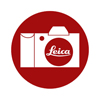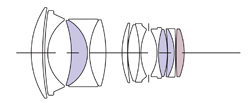- Visualizza Nuovi Contenuti
- Nikonland
- Sezioni
- Test
- Guide agli acquisti
- Indice Articoli
- Blog
- Forum
-
Fotografie
- Novità dalle Gallerie Fotografiche di Nikonland
- Una foto soltanto : Consigli & Critiche
- Ultime Immagini Caricate
- Ultimi Commenti
- _____________________________
- Contest e occasioni speciali di Nikonland
- Natura
- Fiori
- Ritratto
- Nudo
- Street
- Motori (auto e moto)
- Paesaggi e Panorami
- Architetture
- Viaggi e reportage di viaggio
- Sport (no motori)
- Vendo e Compro
- Downloads
-
Altro

Benvenuti su Nikonland Questo sito è indipendente, è autofinanziato, non promuove e non raccoglie pubblicità. Non è collegato con Nikon, Nital o le loro sussidiarie
Nikonland non è una rivista periodica e non è quindi sottoposta alla normativa vigente
Ultimi Test
-
 Panasonic Lumix DC- GH5: changing photography
Panasonic Lumix DC- GH5: changing photographyMax Aquila - gen 04 2018 17:26
-
 Sony Vario Sonnar 2,8/24-70 ZA SSM II: lo Zeiss...
Sony Vario Sonnar 2,8/24-70 ZA SSM II: lo Zeiss...Max Aquila - ago 08 2017 10:39
-
 Nikon 24-70mm F2.8E VR (test/prova)
Nikon 24-70mm F2.8E VR (test/prova)Lieve - ago 02 2017 16:25
-
 Nikon D7500 o Nikon D500 : quale scegliere ? (g...
Nikon D7500 o Nikon D500 : quale scegliere ? (g...Lieve - ago 01 2017 12:38
-
 Nikon D7500 : io non ho paura ! (test/prova)
Nikon D7500 : io non ho paura ! (test/prova)Lieve - ago 01 2017 13:59
Altri Contributi
-
 [libro Nikonland centenario] Il Terzo Occhio
[libro Nikonland centenario] Il Terzo OcchioAlberto Coppola - ago 17 2017 15:43
-
 [reportage] Non è più strano... il Tai Chi Chuan nei Parchi a Milano.
[reportage] Non è più strano... il Tai Chi Chuan nei Parchi a Milano.Silvio Renesto - ago 05 2017 13:16
-
 100 anni di Nikon il mito intramontabile
100 anni di Nikon il mito intramontabileRoby C - ago 04 2017 14:49
-
 01-09-2017 - Pravo dopo quarant'anni cambia sede
01-09-2017 - Pravo dopo quarant'anni cambia sedeRoby C - ago 02 2017 17:08
-
 31 luglio 1954... e uno che diverrà un famoso nikonista...
31 luglio 1954... e uno che diverrà un famoso nikonista...Roby C - lug 31 2017 18:48
-
 la Vera Storia della Riunione del 29 Luglio...
la Vera Storia della Riunione del 29 Luglio...Roby C - lug 30 2017 22:46
-
 Sardegna - Sud Est
Sardegna - Sud Estcris7 - lug 24 2017 19:27
-
 Avignone - Il festival off
Avignone - Il festival offMassimo Vignoli - lug 18 2017 21:59
-
 [editoriale] Garanzia cinqueminuti...
[editoriale] Garanzia cinqueminuti...Max Aquila - lug 12 2017 12:21
-
 [motori] Monza Historic
[motori] Monza HistoricGiannantonio - lug 06 2017 13:39
-
 [libro Nikonland centenario] だいすきニコン (daisuki Nikon)
[libro Nikonland centenario] だいすきニコン (daisuki Nikon)Alberto73 - lug 04 2017 21:52
-
 [manifestazioni] TRATTA 29 giugno 2017
[manifestazioni] TRATTA 29 giugno 2017tommowok - giu 30 2017 13:23
-
 [luoghi] i laghi del Trentino
[luoghi] i laghi del TrentinoAlberto73 - giu 29 2017 21:13
-
 [reportage] Tre Torri
[reportage] Tre TorriGiannantonio - giu 28 2017 15:46
-
 [Nikonland libro Centenario] come da tag
[Nikonland libro Centenario] come da tagValerio Brùstia - giu 26 2017 00:06
In evidenza
-
 Le Nikon del 2017
Le Nikon del 2017Lieve - feb 08 2017 08:36
-
 16 ottobre - 2006-2016 : dieci anni della nostr...
16 ottobre - 2006-2016 : dieci anni della nostr...Lieve - ott 16 2016 06:03
-
 La Stampa in Bianco e Nero
La Stampa in Bianco e NeroSpinoza - mag 19 2016 19:55
-
 Nikon D5 : semper fidelis (test/prova)
Nikon D5 : semper fidelis (test/prova)Lieve - ott 30 2016 17:17
-
 La nascita di Nikon (Nippon Kogaku) e la Marina...
La nascita di Nikon (Nippon Kogaku) e la Marina...Lieve - mar 04 2015 11:11
-
 Nikon D810 : la terra promessa (test/prova)
Nikon D810 : la terra promessa (test/prova)Lieve - mar 10 2015 13:50
-
 Il fascino intramontabile delle foto stampate
Il fascino intramontabile delle foto stampateLieve - mag 22 2014 09:23
-
 Calibrare e Profilare il monitor. Guida pratica
Calibrare e Profilare il monitor. Guida praticaSpinoza - mag 13 2014 12:57
Ultime News
-
 25 luglio 2017 : fine della ricreazione
25 luglio 2017 : fine della ricreazioneLieve - lug 28 2017 11:02
-
 La Nikon D850 ha un mirino ibrido ?
La Nikon D850 ha un mirino ibrido ?Lieve - lug 27 2017 05:40
-
 Importante aggiornamento firmware per la Nikon...
Importante aggiornamento firmware per la Nikon...Lieve - lug 12 2017 07:50
-
 Nuovo Nikon AF-P 70-300mm F4.5-5.6E VR (FX)
Nuovo Nikon AF-P 70-300mm F4.5-5.6E VR (FX)Lieve - lug 11 2017 07:28
-
 New Old Camera : servizio 'demo' e Meet...
New Old Camera : servizio 'demo' e Meet...Lieve - giu 12 2017 07:41
-
 Nuovo Nikon 10-20mm F4.5-5.6 VR
Nuovo Nikon 10-20mm F4.5-5.6 VRLieve - lug 07 2017 16:49
-
 Nuovo Nikon 8-15mm F3.5-4.5E Fisheye
Nuovo Nikon 8-15mm F3.5-4.5E FisheyeLieve - mag 31 2017 07:23
-
 Nuovo Nikon 28mm F1.4E
Nuovo Nikon 28mm F1.4ELieve - mag 31 2017 07:36
-
 Fotografia, messaggi, il tempo in cui viviamo.
Fotografia, messaggi, il tempo in cui viviamo.Lieve - giu 25 2017 05:35
-
 Il dado è tratto. Sarà il 2018 l'anno mirro...
Il dado è tratto. Sarà il 2018 l'anno mirro...Lieve - lug 12 2017 07:15
Nuovo Sigma 50mm F1.4 HSM ART
gen 07 2014 01:00 |
Lieve
in News dal mondo fotografico
 Sigma annuncia il nuovo normale della serie ART da 50 mm F1.4 che va a sostituire il precedente modello presente in catalogo dal 2008.
Sigma annuncia il nuovo normale della serie ART da 50 mm F1.4 che va a sostituire il precedente modello presente in catalogo dal 2008. L'obiettivo promette grande prestazioni perchè lo schema riprende l'idea di Zeiss di mutuare la disposizione delle lenti come nei grandangolari, anzichè lo schema tipico simmetrico dei normali.
Le lenti sono "grandi" a vantaggio delle prestazioni ai bordi.
Sigma si è anche dotata di un sistema di controllo di qualità specifico con cui saranno testati tutti gli obiettivi prodotti prima della spedizione.
L'apparecchio è :
- grande : 100 mm x 85 mm con un peso di 815 grammi
- popolato : 13 lenti in 8 gruppi con lenti SLD ed asferiche

- ha distanza minima di messa a fuoco molto ridotta anche per un normale (40 cm)
- schema "rivoluzionario" rispetto agli altri normali (promessa di prestazioni ancora superiori a quelle del 35/1.4 HSM).
Compatibile con la nuova dock USB per l'aggiornamento del firmware e dei parametri.
Data di disponibilità e prezzo non ancora effettivamente definite.
Comunicato stampa ufficiale :
In 2008, Sigma released a large diameter standard lens designed for digital SLRs, "SIGMA 50mm F1.4 EX DG HSM". At that time, products for film cameras were prevalent, yet we spent enormous effort to set a new benchmark for the 50mm lens that optimizes the characteristics of digital cameras, such as compensating peripheral brightness, controlling the point images in the corners, and improving the image drawing, not only around the focusing point, but also other areas in the image.
In recent years, as the DSLR evolves, development of image sensors for higher pixel size has created the photographers’ desire for the lenses with superior performance. In 2012, Sigma has announced the "Art" line that achieves unsurpassed expressive performance to fulfill the higher requirement of photographers. The first lens from the "Art" line "SIGMA 35mm F1.4 DG HSM [A 012]" sought for uncompromising performance, and it resulted in great reviews as well as a lot of awards from all over the world. Based on the accumulated wisdom and know-how to establish the standard for our "Art" line series, we are proud to announce the development of the new high performance standard lens with a large diameter for this new era of superb image quality.
- Corresponding AF Mounts: SIGMA, Canon, Sony and Nikon
- Accessory: Case, Petal-Type Hood (LH830-02) supplied.
1. Art line delivers high-level artistic expression
SIGMA is organizing all its interchangeable lenses into three product lines; Contemporary, Art, and Sports, where each line has a distinctive concept. Designed with a focus on sophisticated optical performance and abundant expressive power, our Art line delivers high-level artistic expression. With the astonishing rendering performance that meets the high standard, along with landscapes, portraits still-life, close-up, and casual snaps, they are perfect for the kind of photography that unleashes the inner artist. Ideal for studio photography, they offer just as much expressive scope when capturing architecture and starry skies and many other scenes.
2. Astonishing rendering performance
Utilizing know-how and the latest design technology accumulated through the past developments, it corrects the aberration thoroughly and achieves high resolution and astonishing rendering performance even near the edge of the image.
• Achieving both high resolution and beautiful bokeh
While pursuing a high level of resolution on the focused point, bokeh in front and behind the point of focus is carefully maintained to have soft rendering. Aberrations including sagittal coma flare and color distortion that affect the image quality are thoroughly corrected. From open aperture, high-definition rendering without blur is achieved. Moreover, by ensuring vignetting at the minimum and preventing color blur around the front and back of the focus point, it also achieves natural bokeh.
• Excellent correction of sagittal coma flare
It is ideal for a wide aperture standard lens to have a high rendering performance from open aperture throughout the entire image. For instance, the molded glass aspherical lens elements provide excellent correction to sagittal coma flare. It is perfect for astronomical photography and shooting of illumination because of the reduced blur on the point light sources near the edge of the image. It also creates an attractive bokeh in portraits and indoor shooting.
• Correction of axial chromatic aberration
For axial chromatic aberration that is hard to correct even during the image processing, SLD (Special Low Dispersion) glass elements are incorporated, ensuring high image quality throughout the entire focusing range. The lens achieves sharp and high contrast image rendering.
• Minimized distortion
It is not possible to compensate for distortion just by changing the aperture values. Thus, the lens development stage was vital in ensuring minimized distortion. The "SIGMA 50mm F1.4 DG HSM" has positioned each glass element to optimize the power layout at respective positions, and succeeded in minimizing distortion.
• Rich peripheral brightness
It secures very rich brightness in the peripheral areas, which can be a common problem for a lens with a large diameter. By positioning wide elements in the front group, it has improved the efficiency at large apertures. Since it is capable of minimizing vignetting, very clear depiction across the image is ensured.
• Designed to minimize flare and ghosting
Flare and ghosting were thoroughly measured and monitored from the lens development stage to establish an optical design which is resistant to strong incidental light such as backlight. The Super Multi-Layer Coating reduces flare and ghosting and provides sharp and high contrast images even in backlit conditions.
• Minimum focusing distance of 40cm
The lens incorporates a floating system that adjusts the distance between lens groups while focusing, thereby reducing the amount of lens movement required. This achieves a minimum focusing distance of 40cm and maximum magnification ratio of 1:5.6. As there is less variation in aberration at different shooting distances, the lens delivers high rendering performance throughout the entire focusing range.
3. Hyper Sonic Motor ensures High AF Speed
The HSM (Hyper Sonic Motor) ensures a silent, high-speed AF function. Optimizing AF algorithm, smoother AF is achieved. It also enables full-time manual focusing capability which allows sensible focus adjustment by simply rotating the focus ring.
4. New Customizing Option added to “SIGMA USB DOCK”
With the optional SIGMA USB DOCK and the dedicated special software “SIGMA Optimization Pro”, you can update your lens firmware, or adjust focus points by attaching this lens to a SIGMA USB DOCK connected to a computer. Other Features
Incorporating Rounded Diaphragm
The 9 blade-rounded diaphragm creates an attractive blur to the out-of-focus areas of the image.
Design Concept
With the new product lines, supplied hoods incorporate rubber for the connected part. Lens caps and AF/MF switches are also newly designed in order to improve usability. For the parts inside, metals and a new material called TSC (Thermally Stable Composite), which works well with metals, are located to achieve products with high accuracy. The lens barrel includes the year of release, engraved for users to recognize when the lens was released.
Brass made bayonet mount
This lens incorporates a brass made bayonet mount which has both high accuracy and durability. A special treatment to reinforce its strength is applied to the surface giving it greater strength and making it highly resistant to long-term use.
Evaluation with Sigma’s own MTF measuring system “A1”
We used to measure lens performance with MTF measuring system using conventional sensors. However, we’ve now developed our own proprietary MTF (modulation transfer function) measuring system (A1) using 46-megapixel Foveon direct image sensors. Even previously undetectable high-frequency details are now within the scope of our quality control inspections. The SIGMA 50mm F1.4 DG FISM will all be checked using this “A1” before they are shipped.
*A1: Aizu1
“Made in Japan”
All Sigma's manufacturing - right down to molds and parts - is carried out under an integrated production system, entirely in Japan. We are now one of the very few manufacturers whose products are solely "made in Japan". We like to think our products are somehow imbued with the essence of our homeland, blessed as it is with clean air and water, and focused, hard-working people. We pride ourselves on the authentic quality of Sigma products, born of a marriage between highly attuned expertise and intelligent, advanced technology. Our sophisticated products have satisfied professionals and lovers of photography all over the world, because our manufacturing is based on genuine craftsmanship, underpinned by the passion and pride of our experts.
Applicable for the Mount Conversion Service
As an experienced lens manufacturer that has been creating a diverse range of interchangeable lenses, we have started the innovative chargeable service “Mount Conversion Service”. With this service, the mount of your current SIGMA lenses can be changed to another mount of your choice. It gives a new life to your favorite lenses when you wish to use it on a different camera body.
* This “Mount Conversion Service” is different from a normal repair. In order to apply for the service, please contact your nearest authorized subsidiary / distributor of SIGMA.
0 user(s) are online (in the past 15 minutes)
0 utenti, 0 ospiti, 0 utenti anonimi













87 Comments
E se da un lato queste tue affermazioni mi creano dispiacere da utente Nikon...da un altro lato mi fanno "dormire sonni tranquilli" sapendo che, se Nikon non vuol darsi una sveglia, avremo pane per i nostri denti da Sigma (a prezzi anche più convenienti).
Inserzione su Ebay, Italia, garanzia MTrading.
non conosco questo venditore ma il prezzo mi sembra già allettante ... quindi faccio un giro da FornitureConti e te lo trovo ancora a meno :
... quindi faccio un giro da FornitureConti e te lo trovo ancora a meno :
dicono in arrivo a fine aprile, fosse anche a metà maggio ...
Ho messo da parte i soldini pure io...
Prezzo allettante e comprensivo anche di Dock...mica male, slurp!
Vediamo se arriva prima del meeting di Nikonland
“Made in Japan”
La maggior parte dei prodotti Sigma – compresi stampi e singoli componenti- sono costruiti interamente in Giappone dal nostro sistema di produzione integrata. Oggi siamo tra i pochissimi che producono interamente in Giappone. Ci piace che i nostri prodotti siano imbevuti dallo spirito del nostro Paese, benedetti da aria e acque purissime e costruiti da forti lavoratori. Siamo orgogliosi della qualità Sigma nata dall’unione tra esperienza e moderna tecnologia avanzata. I nostri sofisticati prodotti soddisfano fotografi professionisti e amatori di tutto il mondo, perché la nostra produzione è basata su lavorazioni artigianali sostenute dall’orgoglio e dalla passione dei nostri esperti.
Stessa idea di Nikon
Ma perché nessuno apprezza il patriottismo Nikon... loro vogliono "imbibire" dello spirito nipponico anche i lavoratori cinesi, quelli thailandesi... insomma vogliono restaurare l'Impero
Stessa idea di Nikon e chiara dimostrazione del guadagno che ci fanno Nik e Canon con i loro prezzi esosi per ottiche made in Japan
F1.4. Pescata da un test, su Canon 1Ds Mk III
Insomma, è il meglio che sanno fare questi tester misuroni. Dobbiamo aspettare che arrivi il mio per vedere effettivamente come va lo sfuocato ...
Sì, penso che Silvio avesse capito che erano parole di Sigma, e che si grattasse ugualmente - e non a torto, forse - la capoccia
Non vi ricordate "gli umori vitali" del Generale Jack Ripper che per mantenere integri beveva solo pura acqua piovana ? (Dr. Strangelove).
(Dr. Strangelove).
Generale Jack Ripper, meraviglioso direi..
Scusate l'OT ma ho in corpo circa mezzo litro di Weissburgunder tirolese puro...
Tornando in tema, invece, B&H segnala che le consegne per la versione Nikon partiranno dal 30 maggio prossimo
L'implacabile Roger Cicala (origini italiane ?) di LensRentals ha fatto una analisi di laboratorio su un campione di 7 Canon 50/1.2L, 7 Zeiss 55/1.4 Otus e 7 Sigma 50/1.4 Art attacco Canon.
ha valutato gli MTF50 e ne ha fatto i grafici di dispersione media qui
Si tratta di una valutazione che prende in esame esclusivamente la nitidezza assoluta e la variazione della stessa su un campione abbastanza vario di obiettivi, non su un unico scelto a caso.
Non tiene conto quindi di altro (autofocus - o no ! - bokeh, costruzione, colore, simpatia per il marchio, etc. etc.).
Le conclusioni di Roger sono queste :
From a resolution standpoint the Sigma is nearly as good as the Zeiss Otus, and clearly better than the Canon 50mm f/1.2 L. It does this at a price point far lower than either of the others. There may (or may not) be some sample variation, but I won’t know for certain until we’ve tested a lot more copies – but even the weakest two copies of the Sigma were clearly better than any of the Canon’s.
...
it’s hard to imagine a better value at 50mm than the Sigma 50mm f/1.4 art.
Da un punto di vista esclusivamente di nitidezza, il Sigma è buono quasi quanto lo Zeiss Otus ed è chiaramente migliore del Canon 50/1.2L.
E lo fa ad un prezzo molto inferiore degli altri due. Ci può essere (o no) una variabilità tra i lotti di produzione ma io questo non lo potrò accertare sinchè non ne avrò testato più copie - ma persino i due esemplari più scarsi del Sigma sono chiaramente migliori di tutti i Canon che ho testato.
...
(al momento) é difficile immaginare un miglior 50 mm di questo Sigma 50/1.4 Art.
Non vedo l'ora di avere il mio e usarlo sulla D800E.
ottimo
Io però faccio sommessamente notare, riprendendo un'acuta osservazione letta su un altro forum, che lo scarto fra i vari esemplari nei Sigma è di gran lunga più elevato rispetto agli altri due, nell'ordine del 20% dell'MTF... in sostanza, se i migliori sfiorano l'Otus, i peggiori non sono poi molto sopra il Canon.
Certo, magari se questo succede al signor Cavalletta lui se lo rimette in specifica con le sue apparecchiature, ma l'utente normale non ha queste possibilità....
L'utente normale può anche farselo sostituire se non lo aggrada.
 , ad un prezzo non troppo superiore ad un ordinario 50/1.4G Nikon (che temo sarà molto più in basso nel diagramma) non è cosa disprezzabile.
, ad un prezzo non troppo superiore ad un ordinario 50/1.4G Nikon (che temo sarà molto più in basso nel diagramma) non è cosa disprezzabile.



Ma se anche fosse sfortunato, il peggiore qui è migliore del migliore dei Canon extralux da 1.700 euro
Certo, Sigma non è Zeiss. Su questo siamo tutti d'accordo. Ma anche 3.990 cocuzzielle non sono la stessa cosa
Diciamo piuttosto che, per 3.990 broccoletti, io pretenderei che il rombo di dispersione dello Zeiss Otus fosse ben più ristretto di quanto appaia in quel grafico
Del 50/1.2L, già c'era gente che giurava che il precedente Sigma gli dava i punti ... anche nel bokeh
Diciamo che è questione di punti di vista, ognuno la vede un po' a modo suo: a me quello Zeiss e quello Canon sembrano "come dovrebbero essere" (...certo, anche a me piacerebbe che fosse più stretto ancora, ma...), è quello Sigma che mi pare un poco troppo "spaparanzato" per un'ottica che vuole ambire davvero al top del top, quale sembra essere l'intenzione della linea Art...
Io personalmente, a guardare quel grafico, a parità di budget avrei cercato meno picchi (=un progetto un pizzico meno ambizioso, magari) e più controllo qualità, raggruppandoli attorno alla linea dei 700 (tanto per buttare un numero). Solo che poi non si poteva più dire che andava come l'Otus e... si vende meglio così che come avrei fatto io. Specialmente se poi si fa in modo di essere sicuri che alla stampa e ai fotografi più influenti capitino in mano esemplari vicino alla linea degli 800...
Sigma non è famosa né per il controllo di qualità né per la costanza di prestazioni tra esemplari.
Anzi, qui sono stati fatti passi da gigante ma tanto ancora potrebbero fare.
Solo che se allineassero il livello della produzione a quella Zeiss temo che non resterebbero su queste tariffe.
Quindi cosa preferire ?
Come dicevo, il budget si può allocare in diversi modi, anche il QC è questione di budget, non è che gli operai della fabbrica Cosina dove fanno gli ZF e ZE sono bravi e quelli della Sigma son distratti... io, da fotografo, come ho scritto preferisco un progetto meno ambizioso (=meno costoso) e i soldi risparmiati metterli nel controllo qualità, così da sapere cosa sto comprando; però dal punto di vista del marketing quella Sigma è un'idea che fa senz'altro vendere di più.
io, da fotografo, come ho scritto preferisco un progetto meno ambizioso (=meno costoso) e i soldi risparmiati metterli nel controllo qualità, così da sapere cosa sto comprando; però dal punto di vista del marketing quella Sigma è un'idea che fa senz'altro vendere di più.
Estremizzando, arriviamo agli Zeiss Jena dei tempi della DDR... se avevi posteriore, beccavi quello che andava come la sua controparte di Oberkochen a 1/10 del prezzo; se però non ce l'avevi, ti trovavi in mano un fondo di bottiglia (e tutte le situazioni intermedie, ovviamente). E' un tipo di roulette che non fa per me... ma in fondo non c'è nulla di sicuro, 7 esemplari sono pochi, magari quelli di mister Cavalletta erano particolarmente altalenanti per prestazioni ma in realtà, facendo assestare la produzione ed esaminandone un campione più ampio, le differenze si livellerebbero. Ho solo portato all'attenzione questo ulteriore fattore da considerare...
A determinare il costo industriale è in larga misura lo standard di accettabilità, ovvero quanto scarto devo generare/manodopera sprecare per raggiungere il livello desiderato.
Per assurdo in elettronica costano più i controlli che la produzione, Chip in silicio ad esempio.
Certo, ma qui stiamo parlando di ottica. Un paio di lenti in più, e le relative tolleranze sempre più stringenti richieste da tutto il gruppo ottico (una cosa è un progetto di 4 lenti, un'altra uno di 12...), incidono eccome sul costo industriale di un obiettivo.
In altre parole, l'Otus non costa più del Planar 50 solo perché ha, per ipotesi, un QC migliore (o perché il marketing ha deciso così...)
L'Otus è prodotto in Germania a quanto ne so io, come gli Zeiss cine da cui deriva.
Detto questo, mi sembrano realmente considerazioni personali.
Personalmente applaudo Sigma per il coraggio e per la determinazione nel voler raggiungere livelli superiori anche con pensate originali (tipo lo schema di questo 50 mm).
E nell'ultimo periodo Sigma ha proposto :
- 150/2.8 e 180/2.8 Macro, due campioni - Nikon : non pervenuto
- 18-35/1.8 DX - Nikon : 18-140 e 18-300 (!)
- 120-300/2.8 - Nikon : un 80-400/4.5-5.6 che a detta del Cicala non va meglio del vecchio Sigma 120-400 4.5.6 ma costa quattro volte tanto
- 35/1.4 e 50/1.4 che assumono livelli di eccellenza - Nikon : 35/1.8G (!)
e non è che Nikon con l'affare D600 abbia dimostrato grandissima cura per il QC e l'intelligenza del suo marketing.
Peraltro non c'è un rumor da casa Nikon che ci faccia capire da che parte stanno andando. O meglio, c'è : direzione indefinita.
Ma io non faccio l'avvocato di Sigma di cui peraltro sono sempre stato cliente critico (orribili il 24-70/2.8 e il 12-24, terribile il 20/1.8) non li ho sposati ma li devo apprezzare e se nella mia borsa per il momento gli obiettivi più utilizzati sono 2 Sigma (prossimamente 3), uno Zeiss e solo un Nikon le ragioni ci saranno.
non li ho sposati ma li devo apprezzare e se nella mia borsa per il momento gli obiettivi più utilizzati sono 2 Sigma (prossimamente 3), uno Zeiss e solo un Nikon le ragioni ci saranno. 
Andando infine ai dati di dispersione del MTF ho verificato che nel caso di supertele Canon (400/2.8 ad esempio), la variabilità è decisamente più ristretta di quella dell'Otus.
Sarà che allora gli operai Canon che fanno i supertele sono più attenti di quelli tedeschi che fanno l'Otus ?
Nel confronto tra il Sigma 24-105/4 e il Canon 24-105/4, la dispersione è praticamente la stessa (su quattro esemplari).
Forse gli operai Sigma sono più attenti agli zoom ? (a me risulterebbe il contrario)
Come dice sempre il Cicala, una verifica potrà arrivare solo dopo che avrà potuto misurare campioni da lotti di produzione diversi in un numero molto più elevato.
Io, comunque, non vedo l'ora che mi arrivi, assicuro che non fotograferò nessuna mira bidimensionale, solo ed esclusivamente soggetti tridimensionali ben dimensionati nello spazio e nel volume